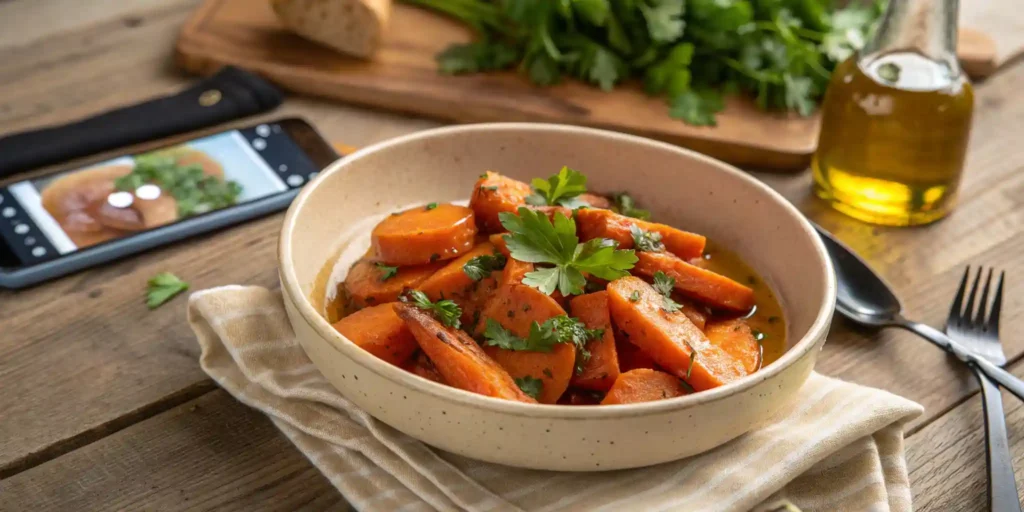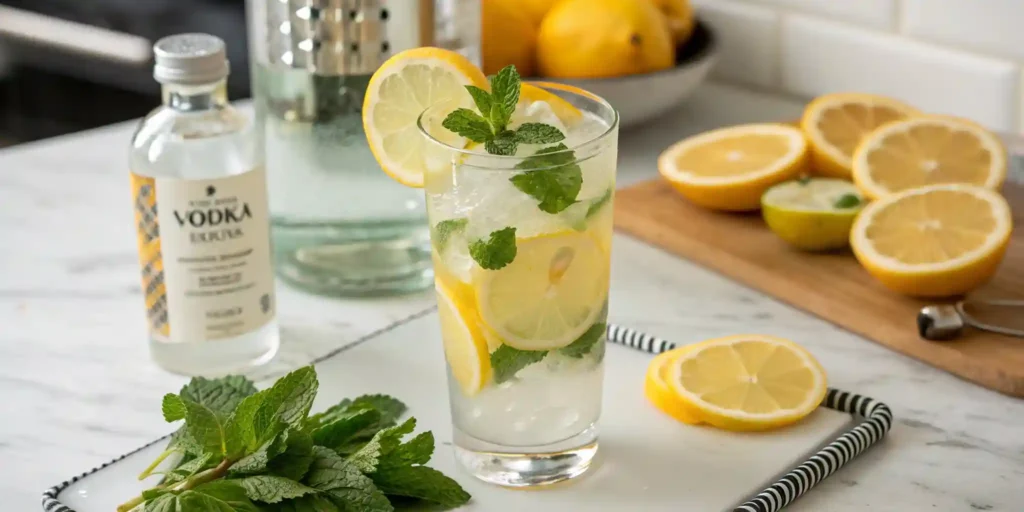Understanding Sous Vide Cooking
Sous vide, which translates to “under vacuum” in French, is a precise cooking technique where food is vacuum-sealed in a bag and cooked in a water bath at a controlled temperature. This method locks in flavor, moisture, and nutrients, resulting in evenly cooked dishes every time.
Why Sous Vide Is Ideal for Precision Cooking
Sous vide is an excellent choice for cooking meats, vegetables, and even desserts because it ensures consistent results. Unlike traditional methods, where food can easily overcook or dry out, sous vide maintains an exact temperature throughout the cooking process. This precision means you can achieve tender meats, vibrant vegetables, and creamy desserts without any guesswork.
In this article, we’ll answer the question, “What is the best thing to make sous vide?” by exploring top dishes, versatile uses, and helpful tips to make the most of this cooking technique.
Best Meats for Sous Vide
Steak: A Perfect Starting Point
One of the best things to make sous vide is steak. This technique ensures that your steak is cooked evenly to your desired doneness, whether rare, medium, or well-done. By using sous vide, you’ll achieve a tender, juicy steak with a perfect edge-to-edge doneness that’s hard to replicate with other cooking methods.
Why Steak Is Perfect for Sous Vide
- The even cooking prevents overcooked edges or an undercooked center.
- You can infuse the steak with flavors by adding garlic, rosemary, or butter to the vacuum-sealed bag.
- It pairs beautifully with finishing touches like a quick sear in a cast iron skillet for that desirable crust.
For steak lovers, sous vide makes it easy to create restaurant-quality results every time.
Pork: Tenderloin and Ribs Made Easy
Sous vide is also fantastic for pork, especially tenderloin and ribs. Pork tenderloin can often dry out when cooked traditionally, but sous vide keeps it moist and flavorful. Meanwhile, ribs benefit from the slow, precise cooking process, breaking down connective tissues for a fall-off-the-bone texture.
Recommended Temperatures for Pork
- Tenderloin: 140°F (60°C) for medium, ensuring a juicy texture.
- Ribs: 165°F (74°C) for tender but firm ribs or 185°F (85°C) for a fall-off-the-bone experience.
Once cooked, finishing the ribs with your favorite barbecue sauce and a quick broil creates a mouthwatering glaze.
Poultry: Perfectly Juicy Every Time
Chicken breast and turkey can easily overcook when prepared using conventional methods, but sous vide eliminates that risk. The precise temperature control ensures that poultry remains moist and tender while retaining all its natural flavors.
Why Poultry Works Well Sous Vide
- Chicken breast is juicy and tender, even when cooked to a safe temperature of 165°F (74°C).
- Turkey is flavorful and moist, perfect for sandwiches or a holiday meal.
- You can season the poultry with herbs, spices, or marinades directly in the bag, enhancing the flavor profile.
Whether you’re preparing a simple chicken dish or experimenting with more complex flavors, sous vide offers unmatched reliability.
Vegetables You’ll Love Sous Vide

Root Vegetables: Sweet and Flavorful
Root vegetables like carrots, beets, and parsnips are some of the best things to make sous vide. This method enhances their natural sweetness and ensures a perfect, fork-tender texture without becoming mushy.
How to Sous Vide Root Vegetables
- Temperature: 183°F (84°C)
- Time: 45–60 minutes
- Add-Ons: Season with butter, garlic, or herbs for extra flavor.
Sous vide carrots glazed with honey or sous vide beets with balsamic vinegar are excellent side dishes for any meal. They pair beautifully with main courses like sous vide steak or chicken.
Leafy Greens and Asparagus
Delicate vegetables like leafy greens and asparagus benefit greatly from sous vide cooking. It helps them retain their bright color, crisp-tender texture, and nutrients.
Quick Tips for Sous Vide Greens
- Asparagus: Cook at 180°F (82°C) for 10–15 minutes with a splash of lemon juice and olive oil.
- Spinach: Cook at 185°F (85°C) for 5 minutes, then finish with a sprinkle of nutmeg.
These vibrant vegetables add a refreshing element to any plate, especially when paired with a rich protein dish like pork tenderloin.
Potatoes: Perfect Texture Every Time
Potatoes are a versatile side dish, and sous vide ensures they cook evenly without becoming waterlogged. Whether you’re making mashed potatoes, roasted potatoes, or even potato salad, this technique delivers consistent results.
How to Sous Vide Potatoes
- Temperature: 190°F (88°C)
- Time: 1–1.5 hours
- Serving Idea: After sous vide, crisp them up in a hot skillet with rosemary and garlic for a delicious finish.
Sous vide potatoes are an excellent companion for many dishes, much like the flavors found in a paula deen corn casserole.
Desserts and Snacks
Custards and Cheesecakes
Sous vide is a game-changer for desserts like custards and cheesecakes, where precise temperature control is critical. This method ensures a silky-smooth texture without the risk of overcooking or curdling.
How to Make Sous Vide Cheesecake
- Use small jars or ramekins for individual portions.
- Cook at 176°F (80°C) for about 1 hour.
- Allow to cool, then refrigerate for at least 4 hours before serving.
For custards like crème brûlée, sous vide guarantees creamy perfection every time. Simply torch the sugar on top for that classic caramelized crust.
Chocolate-Based Treats
Chocolate lovers will find sous vide ideal for preparing molten lava cakes or chocolate ganache. By cooking batter or chocolate mixtures at a controlled temperature, you can achieve a luscious, melt-in-your-mouth consistency.
Steps for Lava Cakes
- Portion batter into jars and cook at 180°F (82°C) for 25–30 minutes.
- Finish with powdered sugar or a dollop of whipped cream for an elegant dessert.
Sous vide chocolate ganache can also be used for dipping fruits or frosting cakes, making it a versatile addition to your dessert repertoire.
Yogurt and Other Fermented Foods
Homemade yogurt is another excellent dish to make sous vide. This method simplifies the fermentation process, delivering consistent results without the need for specialized equipment.
How to Sous Vide Yogurt
- Heat milk to 180°F (82°C) using the sous vide immersion circulator.
- Cool to 110°F (43°C), then mix in a yogurt starter.
- Cook at 110°F (43°C) for 6–12 hours, depending on the desired tanginess.
Homemade sous vide yogurt is perfect for breakfast bowls, smoothies, or as a healthy snack option.
Creative and Unexpected Uses

Egg Dishes: Endless Possibilities
Eggs are one of the most versatile ingredients for sous vide cooking. Whether you prefer soft-boiled, poached, or scrambled eggs, the precise temperature control of sous vide ensures consistently perfect results.
Popular Sous Vide Egg Dishes
- Soft-Boiled Eggs: Cook at 145°F (63°C) for 45 minutes for a creamy yolk with tender whites.
- Egg Bites: Combine eggs, cheese, and vegetables in jars, then cook at 172°F (78°C) for 1 hour.
- Poached Eggs: Achieve restaurant-quality poached eggs by cooking at 167°F (75°C) for 13 minutes.
Egg-based dishes like these pair wonderfully with breakfast classics like boursin scrambled eggs or hearty sides for a complete meal.
Infused Liquors and Syrups
Sous vide offers a quick and efficient way to infuse flavors into liquors, syrups, and even oils. The gentle heating process enhances the infusion without altering the core ingredients’ flavors.
Examples of Infusions
- Citrus Vodka: Combine vodka, lemon zest, and orange peel at 135°F (57°C) for 2 hours.
- Herbal Syrups: Make rosemary or lavender-infused simple syrup by cooking sugar, water, and herbs at 140°F (60°C) for 1 hour.
These infusions are perfect for cocktails, mocktails, or drizzling over desserts.
Seafood: Salmon, Shrimp, and Scallops
Seafood is delicate and can easily overcook using traditional methods. Sous vide eliminates this risk, allowing you to cook salmon, shrimp, and scallops to perfection every time.
Recommendations for Seafood
- Salmon: Cook at 122°F (50°C) for 45 minutes for a flaky, moist texture.
- Shrimp: Perfectly plump shrimp can be achieved at 135°F (57°C) for 30 minutes.
- Scallops: Ensure tender, buttery scallops by cooking at 130°F (54°C) for 40 minutes.
Sous vide seafood is an elegant addition to any meal, whether served with vegetables, rice, or pasta.
FAQs
What Are the Best Cuts of Meat for Sous Vide?
Cuts like ribeye, filet mignon, pork tenderloin, and chicken breast are among the best for sous vide. Tougher cuts like brisket and short ribs also benefit greatly, becoming tender and juicy after slow, precise cooking.
How Long Does Sous Vide Take for Different Foods?
Cooking times vary depending on the food type and thickness:
- Steak: 1–2 hours at 130°F (54°C).
- Chicken Breast: 1.5 hours at 145°F (63°C).
- Vegetables: 30 minutes to 2 hours, depending on the variety.
Can You Overcook Using Sous Vide?
It’s nearly impossible to overcook with sous vide, as the food will not exceed the water bath’s temperature. However, leaving food in the bath for too long can impact texture, making it overly soft.
Do You Need Expensive Equipment?
Not at all! Entry-level sous vide devices are affordable and user-friendly. All you need is an immersion circulator, a large pot, and resealable freezer bags or vacuum-sealed pouches.
Is Sous Vide Energy-Efficient?
Yes, sous vide is energy-efficient compared to traditional cooking methods, as it uses less heat and energy over time.